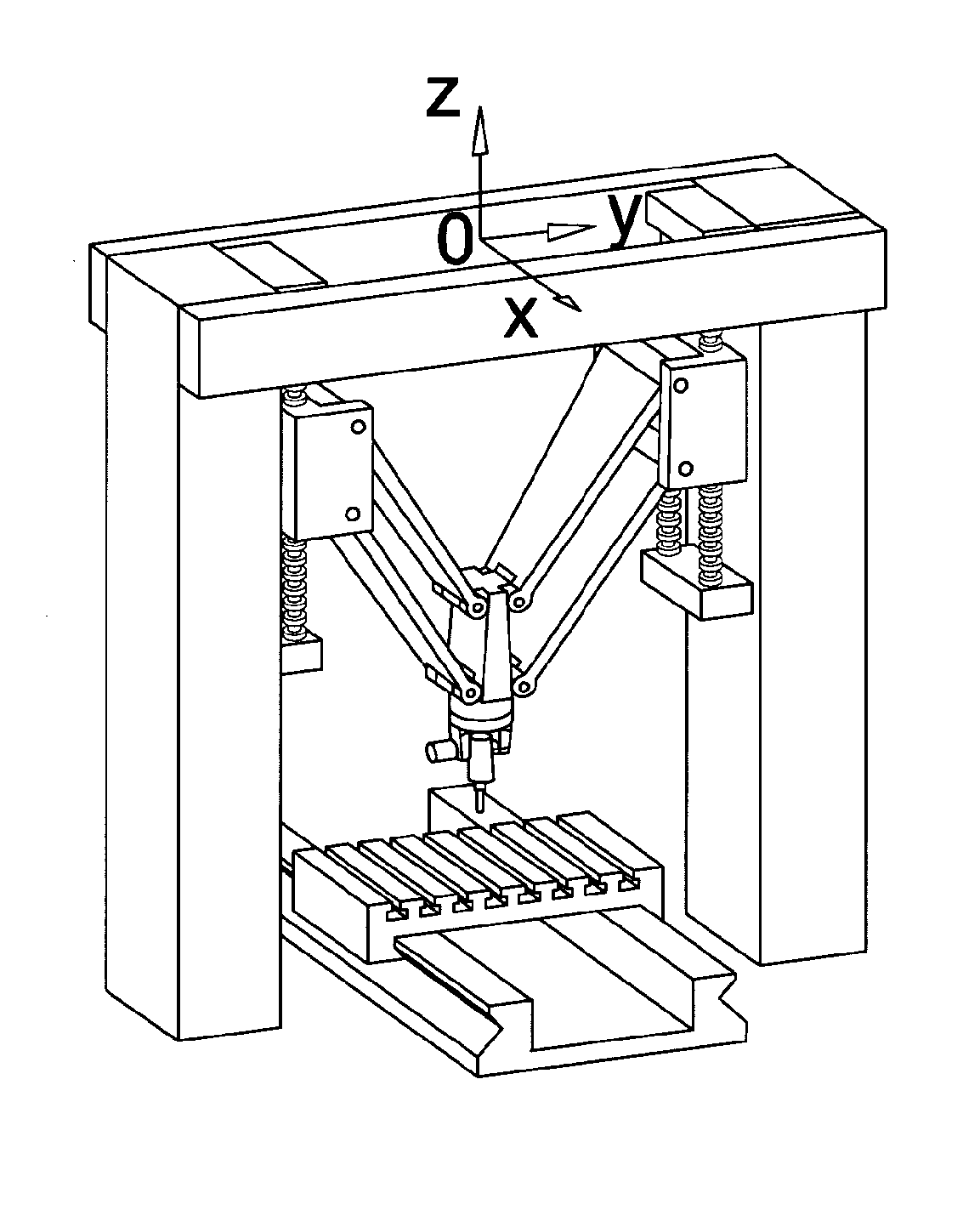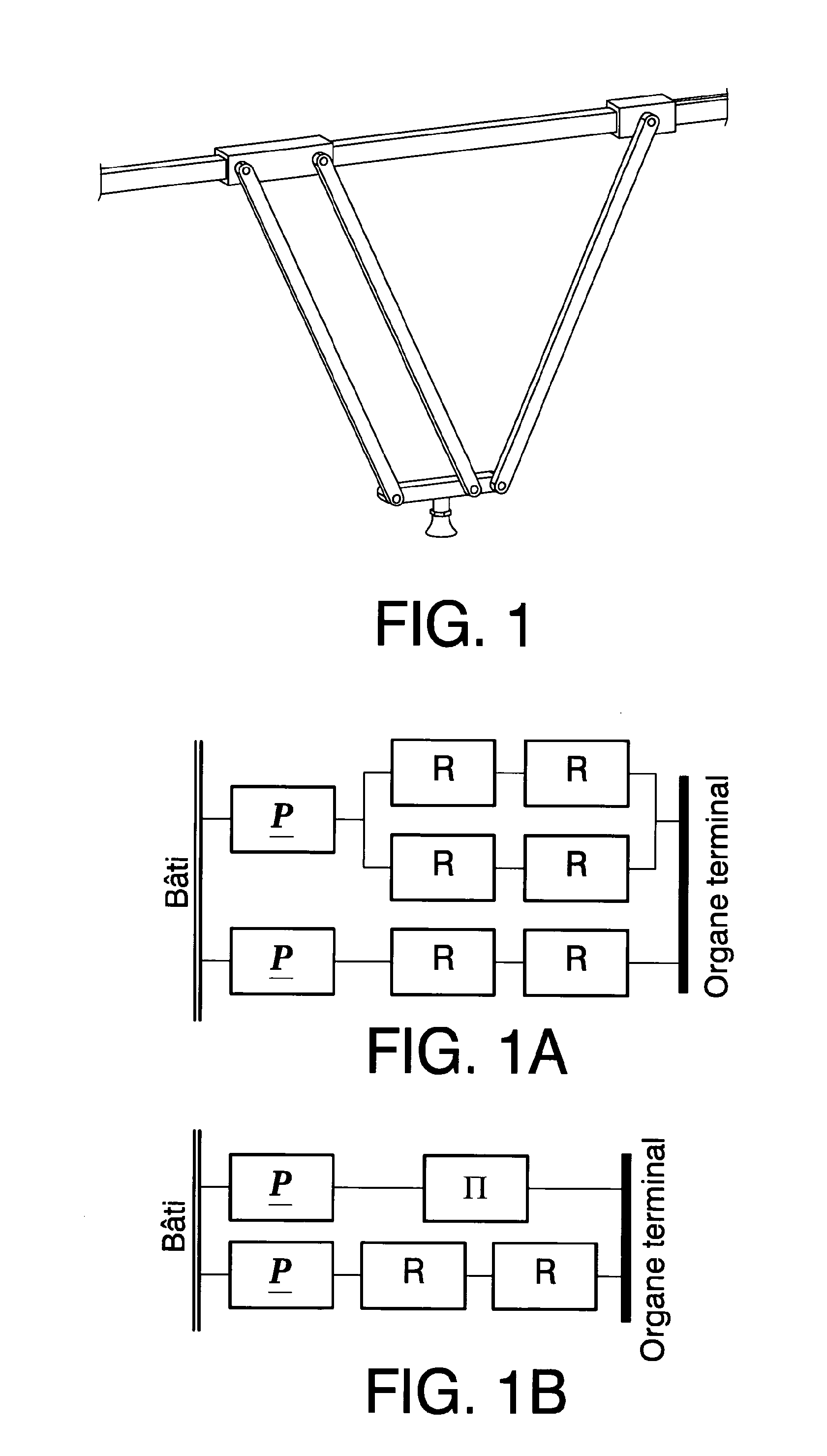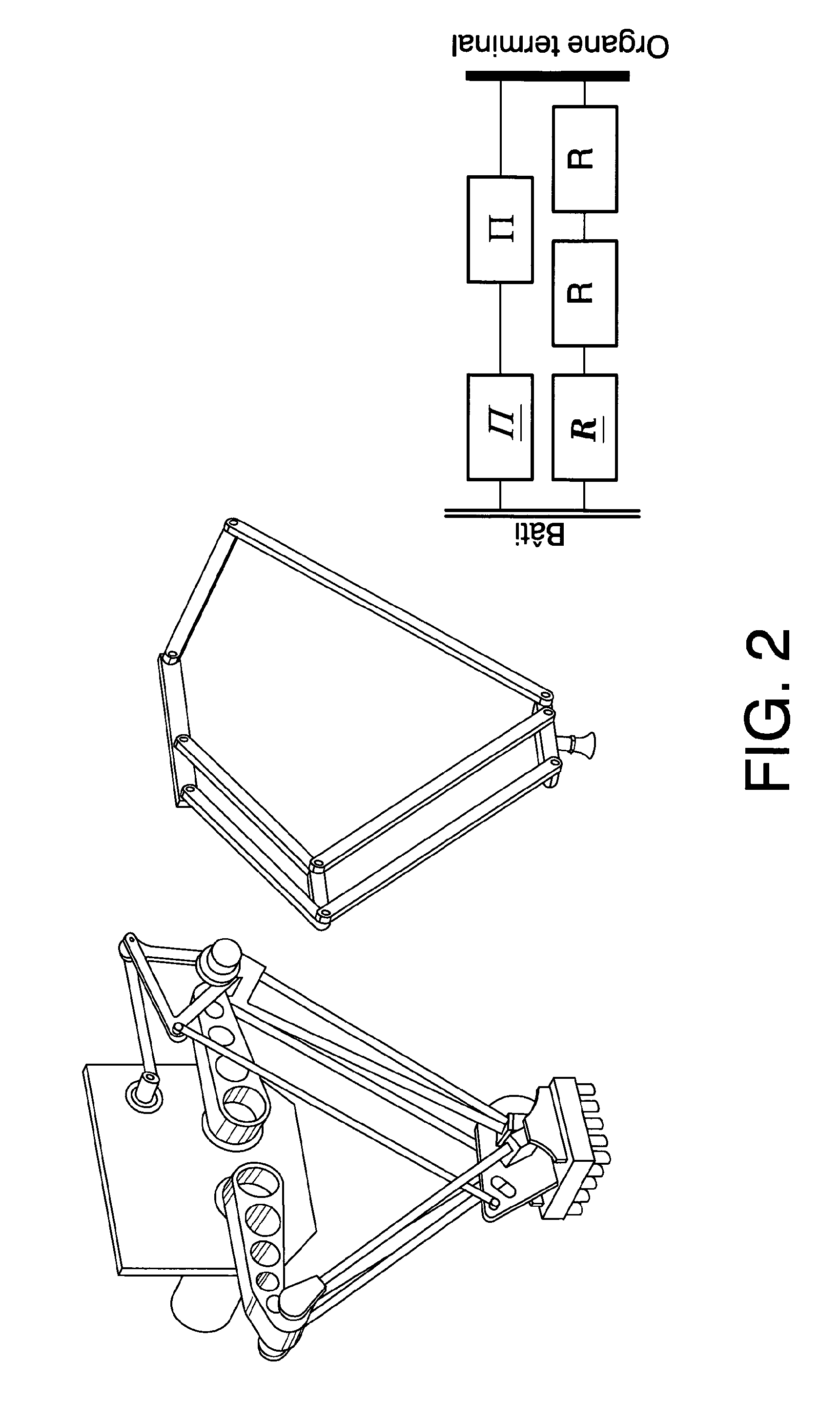Two degree-of-freedom parallel manipulator
a manipulator and degree-of-freedom technology, applied in the field of two degree-of-freedom parallel manipulators, can solve the problems of difficulty in reaching high acceleration, lack of precision, and heavy parts that penalize the dynamics of the robot, and achieve the effect of higher dynamics
- Summary
- Abstract
- Description
- Claims
- Application Information
AI Technical Summary
Benefits of technology
Problems solved by technology
Method used
Image
Examples
first embodiment
[0041]FIG. 6 shows the connection of the rotation of the third frame arm (4) and the fourth frame arm (4′). This embodiment is based on two gears (9) fixed on the revolute joints (8). Said gears (9) have a radius ratio equal to one. Therefore, whenever the third frame arm (4) or the fourth frame arm (4′) rotates, the fourth frame arm (4′) of the third frame arm (4) rotates, but on the opposite direction. Given that the radius ratio is equal to one, the rotation of the third frame arm (4) and the fourth frame arm (4′) is equal in magnitude, although the direction is opposite.
second embodiment
[0042]FIG. 7 shows the connection of the rotation of the third frame arm (4) and the fourth frame arm (4′). In this case, the connection is made by means of four pulleys (11) and two crossed belts (10) fixed on the pulleys (11). In this case, the diameters of the two pulleys (11) must be equal, being this constrain equivalent to the gears radius ratio equal to 1. The belt (10) will be fixed on the pulleys (11) in such a way that both pulleys (11) rotate in opposite directions.
[0043]FIG. 8 depicts a third alternative for the connection of the rotation of the third frame arm (4) and the fourth frame arm (4′). Such connection is based on linking the rotation of the third frame arm (4) and the fourth frame arm (4′) to a linear movement of two different legs (12, 12′) linked to said third frame arm (4) and fourth frame arm (4′) and to the frame (1). The first linkage is made by a revolute joint (13) and the second one with a prismatic joint (14). In order to couple the rotations, the thi...
PUM
 Login to View More
Login to View More Abstract
Description
Claims
Application Information
 Login to View More
Login to View More - R&D
- Intellectual Property
- Life Sciences
- Materials
- Tech Scout
- Unparalleled Data Quality
- Higher Quality Content
- 60% Fewer Hallucinations
Browse by: Latest US Patents, China's latest patents, Technical Efficacy Thesaurus, Application Domain, Technology Topic, Popular Technical Reports.
© 2025 PatSnap. All rights reserved.Legal|Privacy policy|Modern Slavery Act Transparency Statement|Sitemap|About US| Contact US: help@patsnap.com



